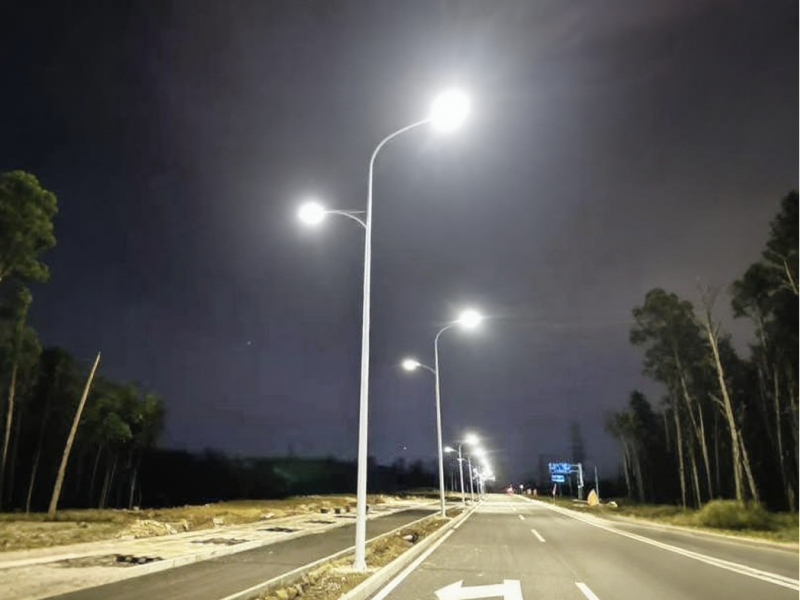The most suitable color temperature range for LED lighting fixtures should be close to that of natural sunlight, which is the most scientific choice. Natural white light with lower intensity can achieve illumination effects unmatched by other non-natural white light sources. The most economical road luminance range should be within 2cd/㎡. Improving overall lighting uniformity and eliminating glare are the most effective ways to save energy and reduce consumption.
LED light company Tianxiang provides professional support throughout the entire process, from conception to project implementation. Our technical team will thoroughly understand your project scenario, lighting objectives, and user demographics, and provide detailed color temperature optimization recommendations based on factors such as road width, surrounding building density, and pedestrian flow.
LED light color temperatures are generally categorized as warm white (approximately 2200K-3500K), true white (approximately 4000K-6000K), and cool white (above 6500K). Different light source color temperatures produce different light colors: A color temperature below 3000K creates a reddish, warmer feel, creating a stable and warm atmosphere. This is commonly referred to as a warm color temperature. Color temperatures between 3000 and 6000K are intermediate. These tones have no particularly noticeable visual and psychological effects on humans, resulting in a refreshing feeling. Therefore, they are called “neutral” color temperatures.
Color temperatures above 6000K create a bluish tint, giving a cool and refreshing feeling, commonly referred to as cool color temperatures.
Advantages of natural white light’s high color rendering index:
Natural white sunlight, after refraction by a prism, can be decomposed into seven continuous spectrums of light: red, orange, yellow, green, cyan, blue, and violet, with wavelengths ranging from 380nm to 760nm. Natural white sunlight contains a complete and continuous visible spectrum.
The human eye sees objects because light emitted or reflected from an object enters our eyes and is perceived. The basic mechanism of lighting is that light strikes an object, is absorbed and reflected by the object, and then reflects from the object’s outer surface into the human eye, allowing us to perceive the object’s color and appearance. However, if the illuminating light is a single color, then we can only see objects with that color. If the beam of light is continuous, the color reproduction of such objects is very high.
Application Scenarios
The color temperature of LED street lights directly impacts nighttime driving safety and comfort. Neutral light of 4000K-5000K is suitable for main roads (where traffic is heavy and speeds are high). This color temperature achieves high color reproduction (color rendering index Ra ≥ 70), provides a moderate contrast between the road surface and the surrounding environment, and allows drivers to quickly identify pedestrians, obstacles, and traffic signs. It also offers strong penetration (visibility in rainy weather is 15%-20% higher than warm light). It is recommended that these be paired with anti-glare fixtures (UGR < 18) to avoid interference from oncoming traffic. For branch roads and residential areas with heavy pedestrian traffic and slower vehicle speeds, the warm white light of 3000K-4000K is suitable. This soft light (low in blue light) can reduce disruption to residents’ rest (especially after 10 PM) and create a warm and inviting atmosphere. The color temperature should not be lower than 3000K (otherwise, the light will appear yellowish, potentially leading to color distortion, such as difficulty distinguishing between red and green lights).
The color temperature of streetlights in tunnels requires a balance of light and dark. The entrance section (50 meters from the tunnel entrance) should use 3500K-4500K to create a transition with the natural light outside. The main tunnel line should use around 4000K to ensure uniform road surface brightness (≥2.5cd/s) and avoid noticeable light spots. The exit section should gradually approach the color temperature outside the tunnel to help drivers adjust to the external light. The color temperature fluctuation throughout the tunnel should not exceed 1000K.
If you’re struggling with choosing the color temperature for your LED streetlights, please feel free to contact LED light company Tianxiang. We can professionally assist you in selecting the appropriate light source.
Post time: Sep-09-2025





